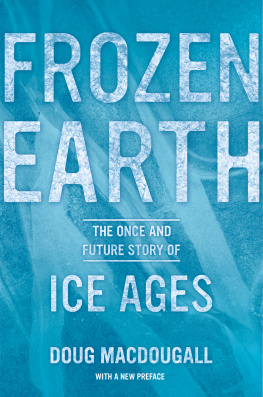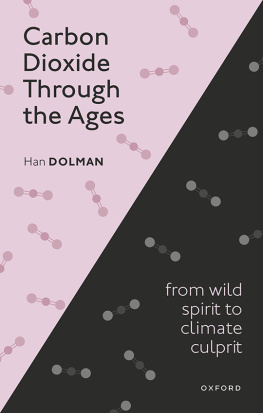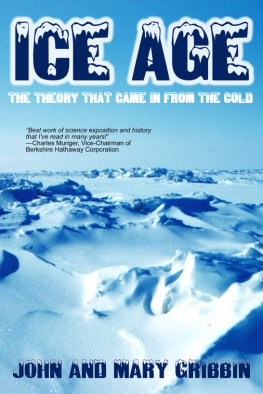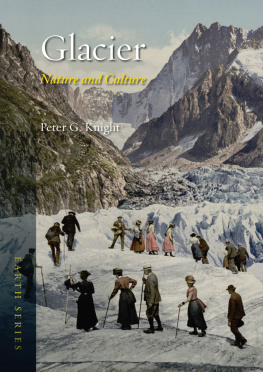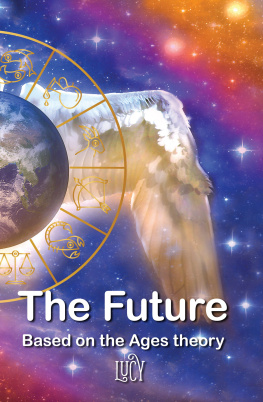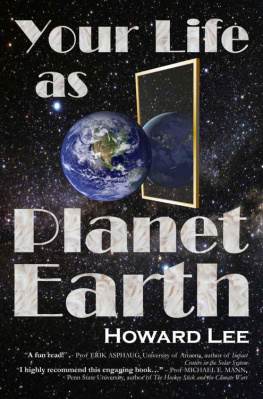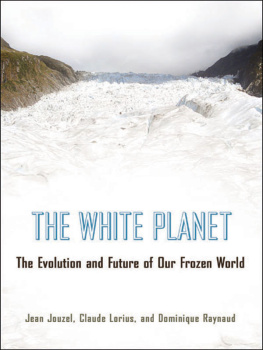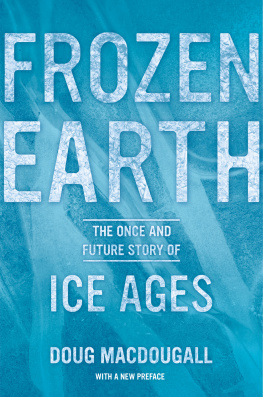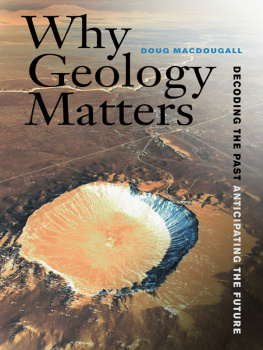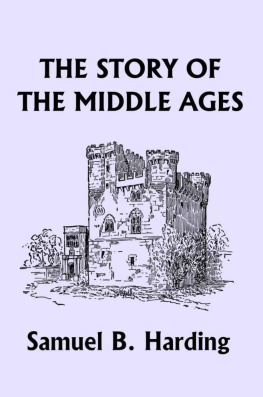
Frozen Earth
Frozen Earth
The Once and Future Story of Ice Ages
WITH A NEW PREFACE
Doug Macdougall

UNIVERSITY OF CALIFORNIA PRESS
BerkeleyLos AngelesLondon
University of California Press, one of the most distinguished university presses in the United States, enriches lives around the world by advancing scholarship in the humanities, social sciences, and natural sciences. Its activities are supported by the UC Press Foundation and by philanthropic contributions from individuals and institutions. For more information, visit www.ucpress.edu.
University of California Press
Berkeley and Los Angeles, California
University of California Press, Ltd.
London, England
First paperback printing 2006
2004, 2013 by The Regents of the University of California
ISBN: 978-0-520-27592-8
eISBN: 9780520954946
An earlier edition was catalogued by the Library of Congress as follows:
Cataloging-in-Publication Data
Macdougall, J. D., 1944.
Frozen earth : the once and future story of ice ages / Doug Macdougall.
p. cm.
Includes bibliographical references and index.
ISBN 978-0-520-24824-3 (pbk : alk. paper)
1. Glacial epoch. 2. Paleoclimatology. 3. Global environmental change. I. Title.
QE698.M125 2004
551.7'92dc222004008502
Manufactured in the United States of America
22 21 20 19 18 17 16 15 14 13
10 9 8 7 6 5 4 3 2 1
In keeping with a commitment to support environmentally responsible and sustainable printing practices, UC Press has printed this book on Rolland Enviro100, a 100% post-consumer fiber paper that is FSC certified, deinked, processed chlorine-free, and manufactured with renewable biogas energy. It is acid-free and EcoLogo certified.
For Grace and Lorn Macdougall,
who always encouraged exploration
CONTENTS
ILLUSTRATIONS
ACKNOWLEDGMENTS
Many thanks go to those who graciously allowed me to use their photographs in this book: Professor Kenneth Hamblin, Brigham Young University; Dr. John Shelton, La Jolla, California; Professor Michael Hambrey, Liverpool John Moores University; Mr. Vasko Milankovitch, North Balwyn, Australia; and Professor John Crowell, University of California Santa Barbara.
My agent, Rick Balkin, worked hard to ensure that this project got off the ground in the first place, and Blake Edgar at U.C. Press provided much input along the way, helping to make the final manuscript more readable, and, I hope, a more interesting book. Guy Tapper produced all of the line drawings in his usual professional manner. Heartfelt thanks to all of you.
PREFACE TO THE 2013 EDITION
Ice ages are global episodes of extreme climate change. For that reason, understanding themwhy they occur, how they impact our planet, what brings them to an endprovides crucial information for anticipating how climate will change in the future and what the effects may be. Since this book was first published, scientists have made great strides toward untangling the complex interplay of factors that affect the Earths climate. Much of this progress has come through careful study of ice ages, especially the most recentthe Pleistocene Ice Age.
What are some of the advances climate scientists have made? They include a clearer understanding of various forcing factors (parameters with the potential to change climate, for example the greenhouse gas content of the atmosphere), improvements in computer modeling of future climate change, and the identification of previously unrecognized processes that may have a profound impact on climate. A key ingredient has been the availability of better physical records of climatefor example, ice cores from the Antarctic that reach further back into the past than those previously available, sediment cores from a Siberian lake that provide a high-resolution record of northern climates over nearly the entire duration of the Pleistocene Ice Age, and cave speleothems (such as stalactites) that accumulate slowly, drip by drip, over long periods. These materials give us a window into the changing ice age environment through the climate proxies they contain: chemical and isotopic properties that reflect past temperatures or other environmental characteristics, biological tracers such as pollen grains that reveal the local climate, and other properties that can give clues to precipitation, windiness, seasonality, and other environmental parameters.
This short preface cannot do justice to the immense amount of research on ice age and climate-related issues that has been carried out over the past few years. But Id like to focus on a few specific studies that give a taste of the kind of work being done. The first of these deals with the how and why of our planets warming up from the frigid peak of its most recent cold period a little more than twenty thousand years ago, a time that scientists refer to as the Last Glacial Maximum, usually abbreviated as LGM, when thick glacial ice blanketed parts of the United Kingdom and Russia, much of Scandinavia, and large portions of North America, pushing down far south of the Great Lakes.
The Pleistocene Ice Age, which has gripped the Earth over approximately the past two and a half million years, has not been monotonously cold. Instead, climate has cycled between long icy intervals and relatively short warm periods, like now, which geologists call interglacials. Analyses of gas bubbles trapped in ice cores from Greenland and the Antarctictiny samples of air from the pastshow unequivocally that the atmosphere had high concentrations of greenhouse gases during the interglacial warm periods and low concentrations during the cold intervals. The ice cores provide information from times long before humans began to influence the atmosphere, so the greenhouse gas variations they record were entirely natural. The question is, were natural increases in carbon dioxide and other greenhouse gases the cause of warm interglacial periods, or were they somehow a result of the higher temperatures? Clearly this is an important question for understanding how the Earths climate will respond to greenhouse gas increases caused by humans.
Until recently, the answer to this question seemed to be that the high concentrations during the interglacials were an effect of the increasing temperatures, not the cause. This conclusion was drawn from detailed studies of Antarctic ice cores, which showed that as the Earth warmed into the interglacials, rising temperatures (measured via isotopic proxies in the ice) slightly preceded the greenhouse gas increases (measured directly in gas bubbles from the same ice cores). The time difference was small, and the results were crucially dependent on accurate dating of the ice cores. But the data seemed robust and the conclusion inescapable. Although higher carbon dioxide levels would have enhanced the warming, something else must have been the primary forcing factor.
However, recent work by an international group of climatologists, published in the journal Nature, has challenged that conclusion (Global Warming Preceded by Increasing Carbon Dioxide Concentrations during the Last Deglaciation, by Jeremy D. Shakun and colleagues, Nature 484, 5 April 2012). These scientists realized that temperature data from the Antarctic ice cores reflect only local temperatures, whereas greenhouse gas results from the same cores provide information for the Earth as a whole because gases in the atmosphere are well mixed globally. The researchers wanted to find out what the story would be if they compared the greenhouse gas results with temperature data that were also averaged globally.
Next page
